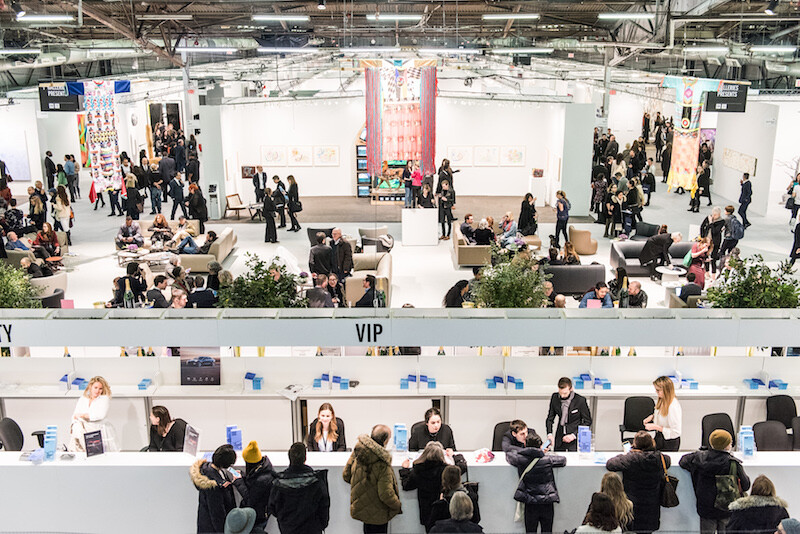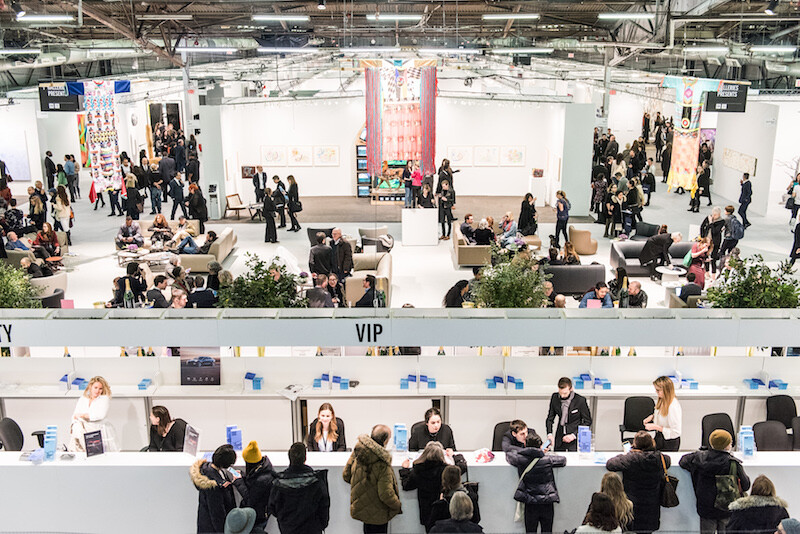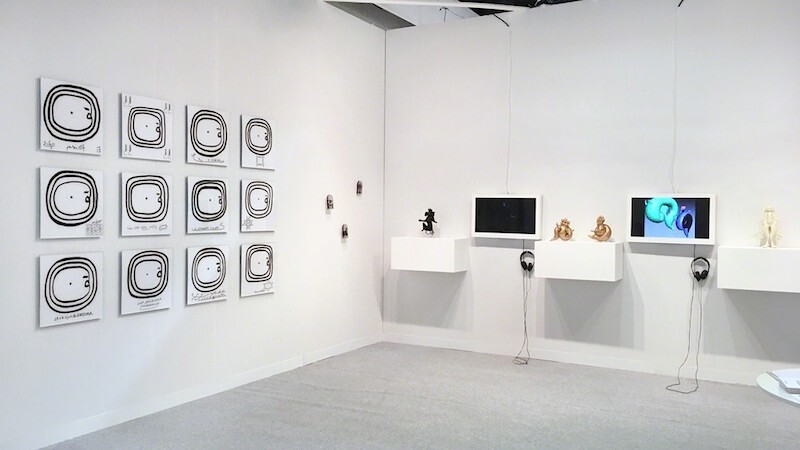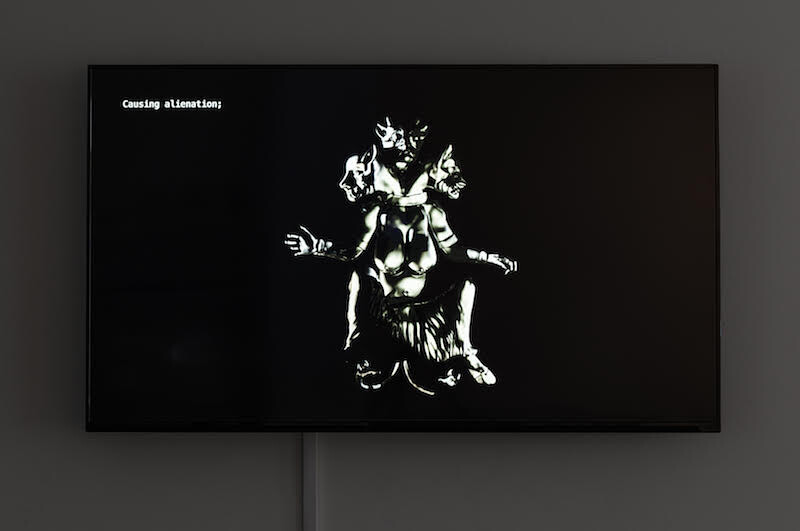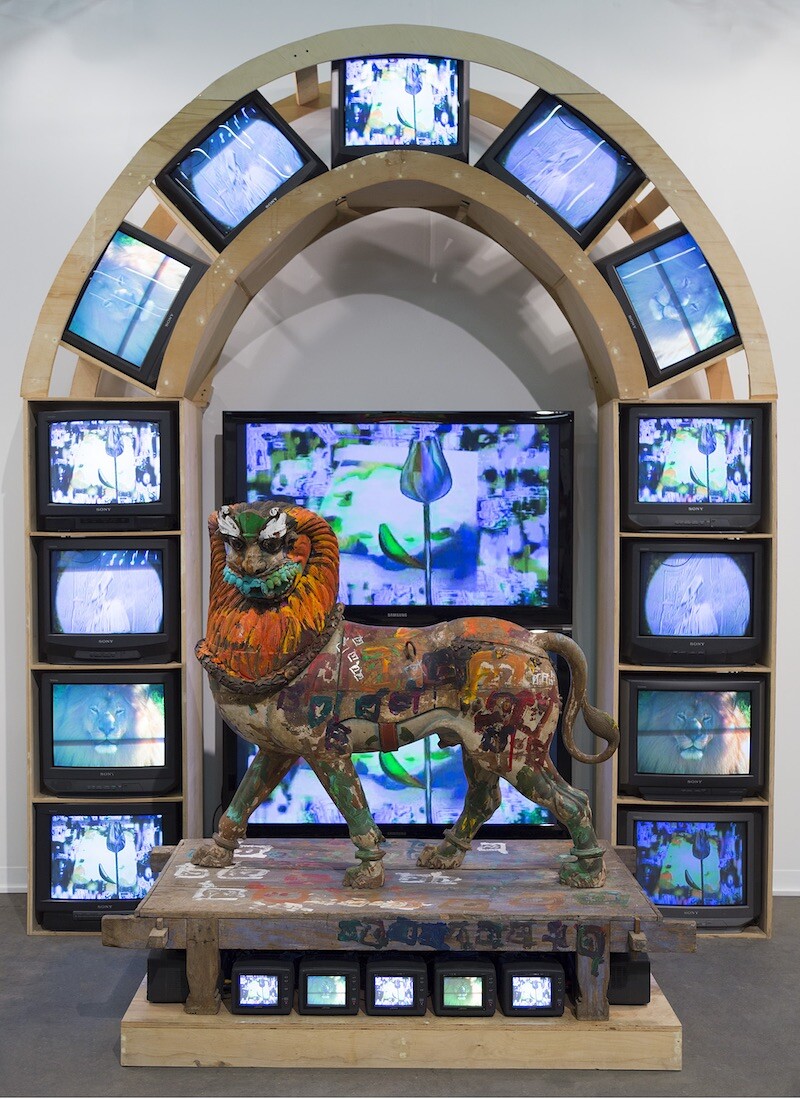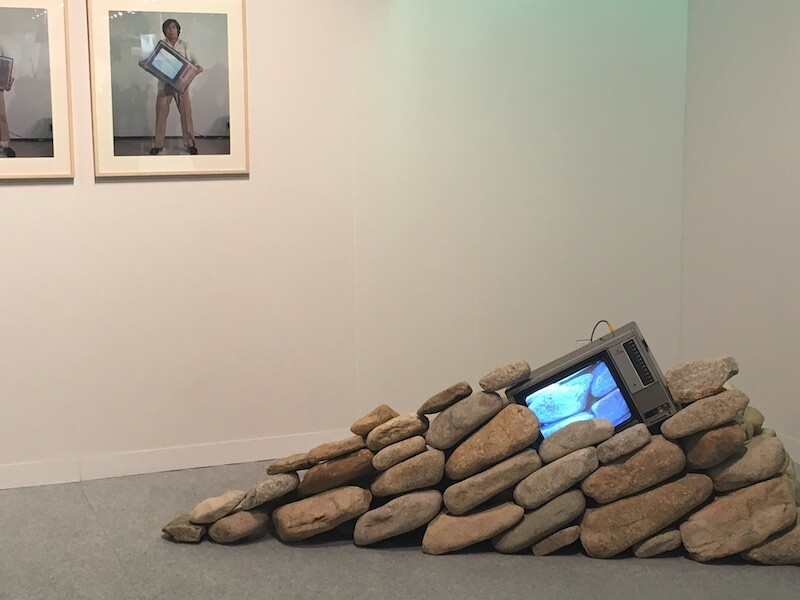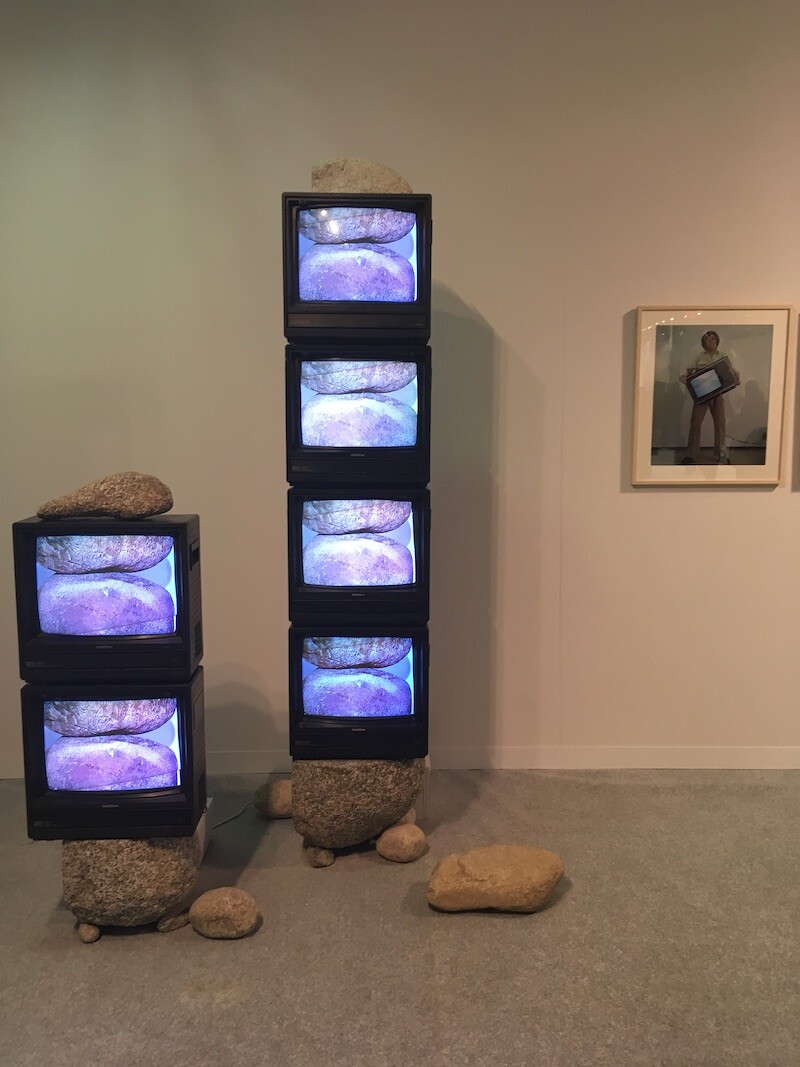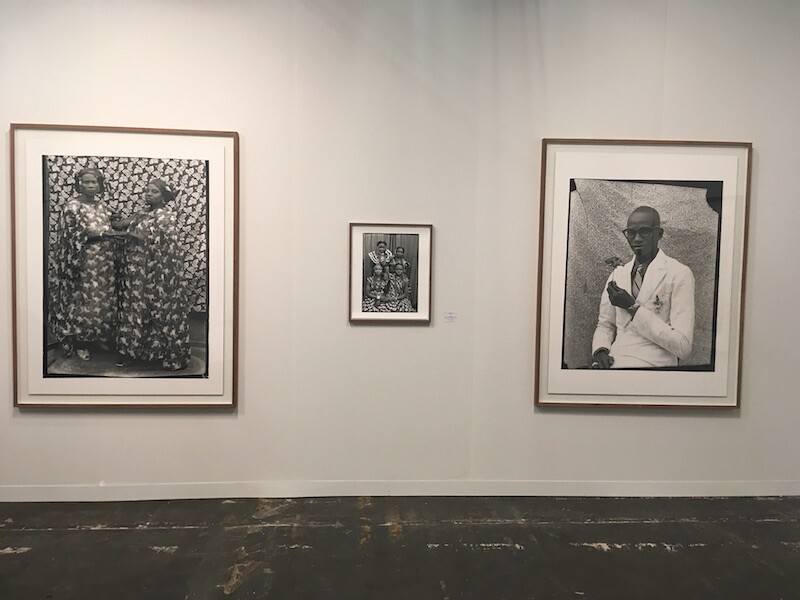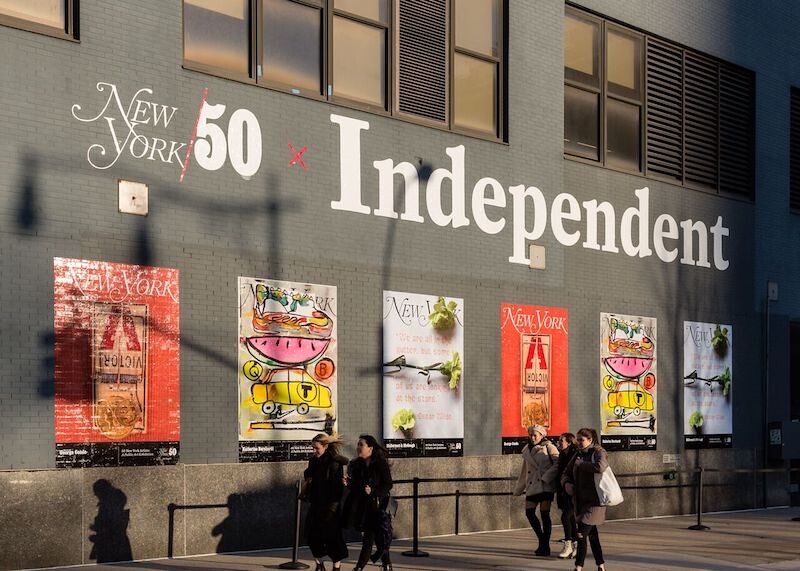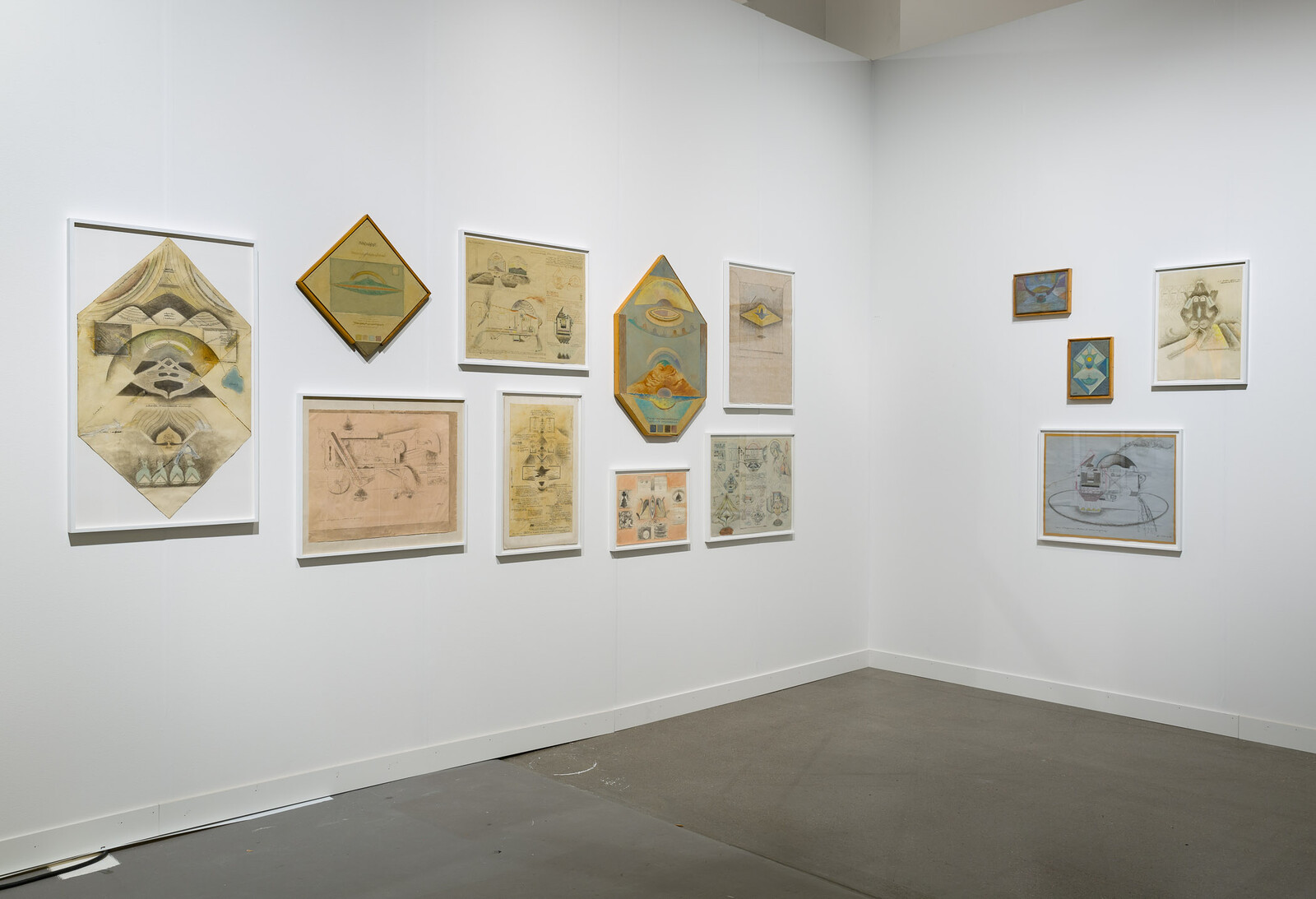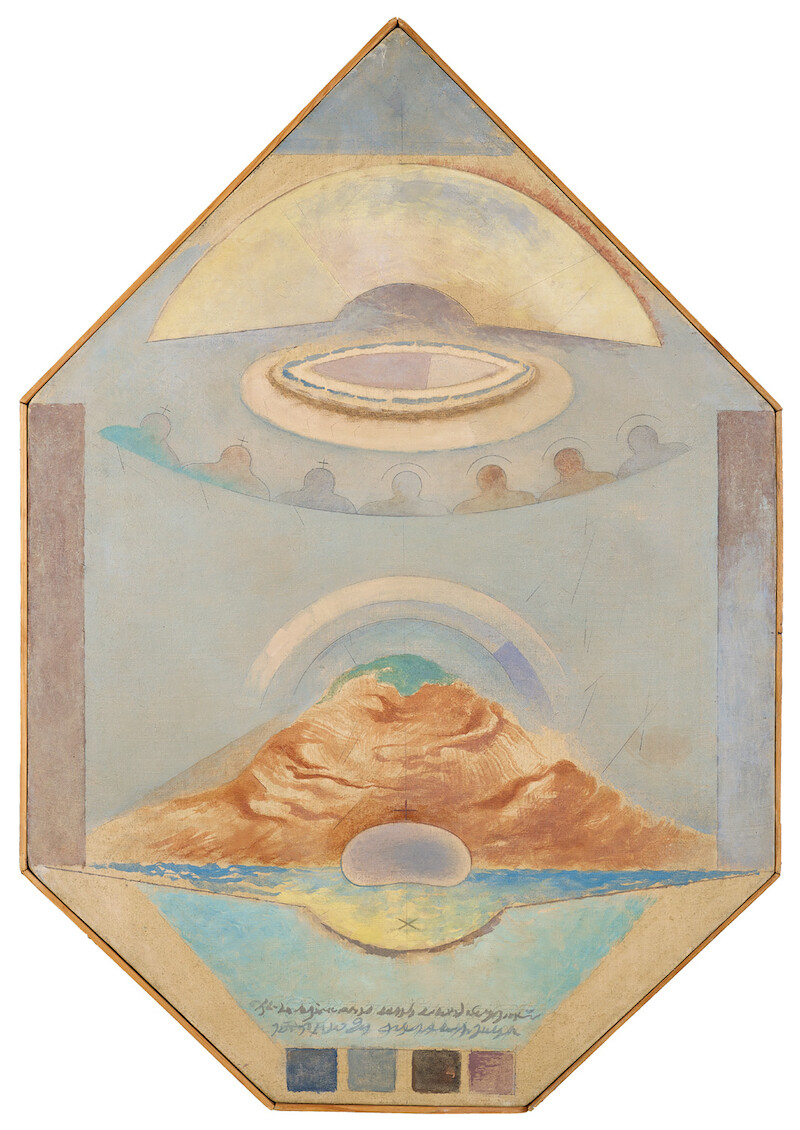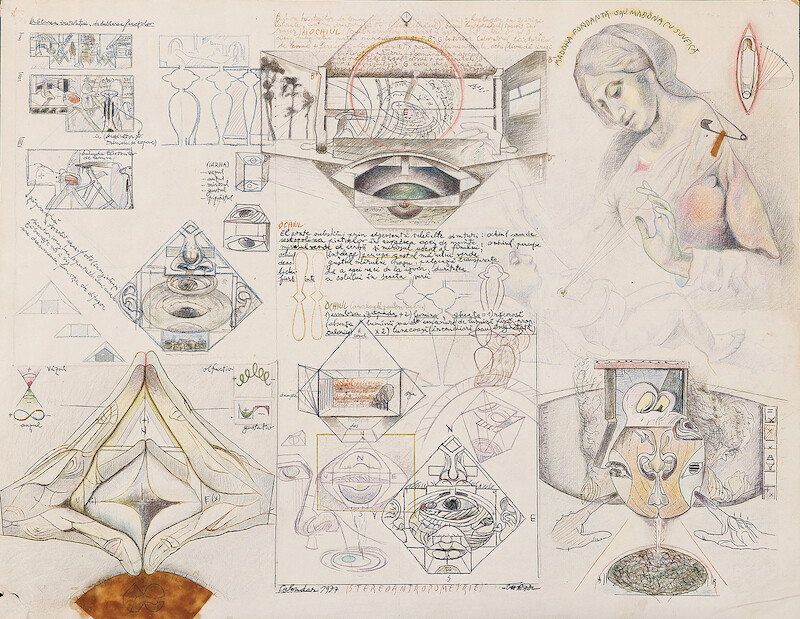The art-fair think piece is as stale as the art fair itself. What could be said already has been, from puzzling over the mysterious machinations of the market, to annual denunciations from gallerists, and ethnographies of those who buy and those who sell. The form of writing that is truest to the form of the art fair is the nimble listicle, the best-or-worst-of reportage, the photo-heavy guided tour; the spirit of the fair is inimical to the weightier, slower-moving thousand-word reflection.
Even though visiting the storied behemoth that is The Armory Show and the leaner, more winsome upstart Independent was something of an exercise in “seen one, seen them all,” I was nonetheless startled to be confronted by works that I actually liked—that offered a cool respite from the surrounding fervor of the art-mall experience, that compelled dreamier reflection. And so begins my own inevitable best-of list: at The Armory, Upfor Gallery from Portland, Oregon, showed Iranian artist Morehshin Allahyari, who commanded sustained attention with her spellbinding videos Huma (2016), Ya’jooj and Ma’jooj (2017), and Aisha Qandisha (2018), each depicting voracious Near Eastern goddesses and fever-causing spirits with glitched-out animations and oracle-like narrations. And even as Nam June Paik’s multimedia sculptural assemblage Lion (2005) aggressively glittered before eager smartphone-wielding viewers at Gagosian’s booth, elsewhere, his lesser-known contemporary Park Hyun-ki (1942–2000) was represented by the Seoul-based Gallery Hyundai with meditative, altar-like video installations that pair gently stacked rocks and TV monitors—beautiful and endearing constructions that are both weighty and weightless, palpable and illusory. Malian studio photographer Seydou Keïta’s (1921–2001) black-and-white portraits of his fellow Bamako denizens were another arresting moment, presented by Galerie Nathalie Obadia (Paris/Brussels)—densely patterned, coolly composed, bold, and piercing images that are equal parts highly constructed and organically vulnerable.
I wasn’t the only critic to thrill to this “discovery” of Hyun-ki and Keïta, which prompts an observation that penetrates beyond my initial impulse to wax melancholically on the fatiguing sameness of the fair viewing experience. There is room to complain about the safety-blanket tactic of embracing the estates of under-known (and often non-Western) artists of the last century, whether deceased or now in the winter of their lives, as seen in the recent boom of interest in older female artists, from Geta Brătescu to Huguette Caland to Carmen Herrera, and other incredible women who were neglected at the peak of their careers. It’s a conquistador-like move, plundering the margins and the past as a safer alternative to offering works by artists whose market is still in flux. (Some of the complexities of working with a younger artist were evidenced by the Upfor gallerist’s admission that Allahyari’s video Aisha Qandisha wasn’t actually finished.) These “new-old” artists are exciting for their novelty, their works burnished with the enticing sheen of something to be discovered—and they can guarantee demand, since the production is finite. This appeal extends well beyond the art market: art historians are just as titillated by the opportunity to delve into uncharted waters, and thus secure their own value in the perhaps even crueler academic marketplace. While on the one hand there’s compelling value in these resuscitations, it also fosters a dynamic that deprives emerging artists of acutely needed financial support and critical attention, even as fairs like Independent promise to chart the pulse of the new.
Then, at Independent, yet another deceased, “undiscovered” artist stole the show: the Romanian Alexandru Chira (1947–2011). His case puts pressure on the complaint described above. As pragmatic a decision as it may have been to pluck Chira from relative obscurity (this is his first solo presentation outside of Romania), there is a piercing importance in giving him a platform, which will hopefully inspire more serious inquiry into this artist’s practice.
Chira is described in press materials as a conceptualist, and indeed came of age professionally at the apogee of that dry, cerebral movement, but he might be more accurately described as an engineer, a mystic, and a shaman. The presentation of his enigmatic paintings and drawings at the Cologne-based gallery Delmes & Zander’s booth is just a portion of the many preludes to Chira’s lifework: De-signs towards the sky, for rain and rainbow, which he began working on in 1995, in his native Transylvanian village of Tăușeni. This amazingly strange, verging-on-kitsch compound of 18 discrete monuments is the visual-art equivalent of a rain dance, conceived of after the village had suffered a year-long drought. Chira even orchestrated spiritual rituals in the compound, designed to encourage the heavens to open onto the land.
The gallerist described the works to me as preparatory studies, but Chira believed them to be more than that—an entire visual system that must be held together in order for the magic of the land art compound to work. (If he sold one of his paintings, for instance, he would recreate it in order to maintain the system’s generative order—a fact that lends a melancholy cast to their posthumous sale at Independent.) A small painting like the undated Study XVII looks like a sci-fi icon. On a partly triangular, partly trapezoidal canvas, a restrained palette of sky blues and earth tones gives form to a land mass, a council of shadowy saint-like figures looking down from on high, a triumphant arc of nearly negative space crowning the whole. A schematic drawing like Calendar—Stereo-anthropometry (1977) shares the paintings’ concerns with spiritual geometry, but here expanded into mock-ups for different mysticotechnical aspects of Chira’s magical land art machine, accompanied by fervid notes that function as much as poetry as instructions or explications, as well as detailed illustrations of the Madonna and a pair of prayerful hands.
Why spend so many words focusing on Chira’s beautiful and bizarre universe, interrupting the staccato tempo of the best-of list that this essay started out as? It’s not just because this fascinating artist deserves further study, or because the works are particularly meritorious, for both their elusive attractive force and their quality as the artifacts of an ardent mind. I wanted to spend the time to focus on Chira’s project for what it offers as an interruption in the way the fair format forces us to conceive of the artwork.
Unlike the similarly bloated form of the biennial, you don’t visit an art fair to understand something—a broad political question, or the state of the youth, or current production in a given locale. You go to the art fair to step into an IRL Instagram stream of dissonant images wrested from context and history, which might actually make the fair the art event that most accurately reflects our hyper-mediatized and fragmented collective imaginary, our shrink-wrapped apprehension of the present.
Chira’s project, on the other hand, is a reminder that the artwork doesn’t have to be one more weightless image in the stream. This is artwork as lifework. Chira’s images don’t just give themselves up slowly in the act of viewing, but were conceived of slowly, as part of a highly charged project with roots in deep time. Contemplating it offers a reminder that ours might be the age of heart-pounding speed and attention deficit disorder, but just because that’s the experience of the fair doesn’t mean that discordant pockets of slow experience aren’t still available to us. When it came time to writing this piece, burdened by the knowledge that there was nothing new to be said, I liked taking the time to imagine a pilgrimage to Tăușeni, where I would stand on a quiet hill before an enormous sculptural geometric abstraction, hoping that it might rain.
